eScience Lectures Notes : Introduction to NewMedia
Slide 1 : 1/26 : From New Media to The Web (index.en.html)
COMP1710
Tools for New Media and the Web
--- or ---
Tools, Design and Management of
Maturing Hypermedia
From New Media to The Web
then 'n'ext or 'b'ack
Slide 2 : ToC : Introduction to NewMedia (tableOfContent.en.html)
Table of Contents (26 slides) for the presentation :
Introduction to NewMedia
Slide 3 : 3/26 : New Media and Web (intro.en.html)
In this session : From New Media to The Web
-
The Context
-
The History
-
The Web
Tools for New Media and the Web
--- or ---
Tools, Design and Management of
Maturing Hypermedia
Slide 4 : 4/26 : NewMedia History : is it that new (1) ? (history1.en.html)
NewMedia History : is it that new (1) ?
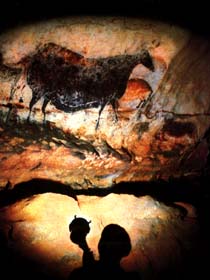 |
Cro Magnon Caves : <15,000 B.C.>
Representation of animal figures
A magic theater of the senses
In the beginning, even before Wagner, life was created
and it was multi-sensory
By 15,000 B.C. Cro Magnon had evolved with a brain
capable of modern intelligence. With this new intelligence the first art
was created deep in subterranean caves in the Dordogne region of Southern
France, in caves such as Lascaux, where Cro Magnon marked the birth of
the aesthetic with the representation of animal figures and coded shamanist
scrawls.
He painted fantastic murals of reindeer, bison,
and bulls in these resonant caverns that flickered with stone candles
and smelled of the acrid aroma of animal fat where rituals were performed.
A magic theater of the senses |
Source : http://www.artmuseum.net/w2vr/timeline/Cave.html
Slide 5 : 5/26 : NewMedia History : is it that new (2) ? (history2.en.html)
NewMedia History : is it that new (2) ?
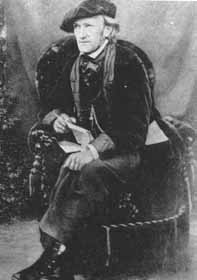 |
Richard Wagner | Total Artwork <1849>
"The future of music, music theater, and all the arts,
lay in an embrace of Gesamtkunstwerk or total artwork, a fusion of the
arts that had not been attempted on this scale since the classic Greeks."
German opera composer Richard Wagner
believed that the future of music, music theater, and all the arts, lay
in an embrace of Gesamtkunstwerk or total artwork, a fusion of the arts
that had not been attempted on this scale since the classic Greeks. In
1849, Wagner wrote the essay, The Art-work of the Future, defining the
synthesis of the arts in which opera served as a vehicle for the unification
of all the arts into a single medium of artistic expression.
The Festpielhaus (Festival House) Theater
-
darkening the house
-
surround-sound reverberance
-
amphitheatrical seating to focus audience attention
on stage
The Festpielhaus (Festival House) Theater
opened in 1876 in Bayreuth, Germany, where Wagner applied his theatrical
innovations including: darkening the house, surround-sound reverberance,
and the revitalization of the Greek amphitheatrical seating to focus audience
attention on stage. This approach to opera foreshadowed the experience
of virtual reality, immersing the audience in the imaginary world of the
stage. |
Source : http://www.artmuseum.net/w2vr/timeline/Wagner.html
Slide 6 : 6/26 : NewMedia History : is it that new (3) ? (history3.en.html)
NewMedia History : is it that new (3) ?
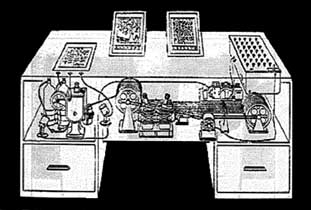
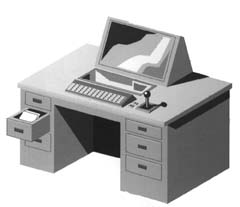
|
Vannevar Bush | Memex <1945>
Chief scientific advisor to Franklin Roosevelt and director of the government's
Office of Scientific Research and Development
Memex, the prototypical hypermedia machine
Essay: "As We May Think"
How information would be gathered, stored, and accessed in an increasingly
information-saturated world
"He [mankind] has built a civilization so complex that he needs
to mechanize his records more fully if he is to push his experiment to
its logical conclusion and not merely become bogged down part way there
by overtaxing his limited memory."
Vannevar Bush rose to prominence during World War
II as chief scientific advisor to Franklin Roosevelt and director of the
government's Office of Scientific Research and Development, where he supervised
the research that led to the creation of the atomic bomb and other military
technologies. His contribution to the evolution of the computer ranges
far and wide: from the invention in 1930 of the Differential Analyzer,
one of the first automatic electronic computers, to his concept of the
Memex, the prototypical hypermedia machine.
In 1945 the Atlantic Monthly invited Bush to contribute
an article on this theme, and the result was the landmark essay, As We
May Think. He used this high profile forum to propose a solution to what
he considered the paramount challenge of the day: how information would
be gathered, stored, and accessed in an increasingly information-saturated
world. This article had a profound influence on the scientists and theorists
responsible for the evolution of the personal computer and the Internet.
|
Source : http://www.artmuseum.net/w2vr/timeline/Bush.html
Slide 7 : 7/26 : NewMedia History : is it that new (4) ? (history4.en.html)
NewMedia History : is it that new (4) ?
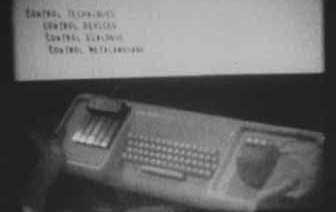
oNLine System (NLS) demonstration at the 1968 Fall Joint Computer Conference
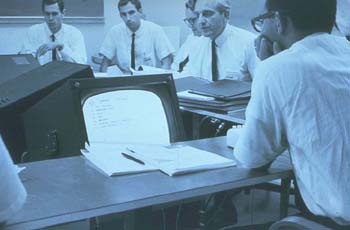
Engelbart and team working with networked NLS computers |
Douglas Engelbart | Augmentation <1968>
"Our goal of augmenting the human intellect will
exhibit more of what can be called intelligence than an unaided human
could by organizing his intellectual capabilities into higher levels
of synergistic structuring."
Invented mouse, windows, e-mail, and the word processor.
Led one of the most important projects funded by ARPA in
the 1960s: a networked environment designed to support collaborative interaction
between people using computers => NLS
Douglas Engelbart is one of the most influential
thinkers in the history of personal computing. He is best known as the
groundbreaking engineer who invented such mainstays of the personal computer
as the mouse, windows, e-mail, and the word processor. Engelbart led one
of the most important projects funded by ARPA (Advanced Research Projects
Agency) in the 1960s: a networked environment designed to support collaborative
interaction between people using computers. It was dubbed the NLS (oNLine
System). This historic prototype, developed at the Stanford Research Institute,
and unveiled in 1968 at the Fall Joint Computer Conference in San Francisco,
influenced the development of the first personal computer and the graphical
user interface at Xerox PARC in the early 1970s.
Engelbart reasoned that networked computing would
not only make individuals more intellectually effective; it would enable
a collaborative method of sharing knowledge. The linking of people and
computers using this approach to interactivity would result in the use
of computers to "solve the world's problems" by augmenting the
capacities of the mind's intellectual faculties. |
Douglas Engelbart expanded on Bush's premise. His quest to "augment human
intelligence," as he aptly phrased it, was based on the insight that the
open flow of ideas and information between collaborators was as important to
creativity as private free association. The personal computer, as he envisioned
it, would not only allow for the arrangement of data in idiosyncratic, non-linear
formats. By connecting workstations to a data-sharing network and turning them
into communications devices, Engelbart's oNLine System allowed for a qualitative
leap in the collaboration between individuals -- almost as if colleagues could
peer into one another's minds as part of the creative process. In the early
1960s, experiments with networked personal computing promised the non-linear
organization of information on a grand scale.
Source : http://www.artmuseum.net/w2vr/timeline/Engelbart.html
Slide 8 : 8/26 : NewMedia History : Ted Nelson (5) (history5.en.html)
NewMedia History : is it that new (5) ?
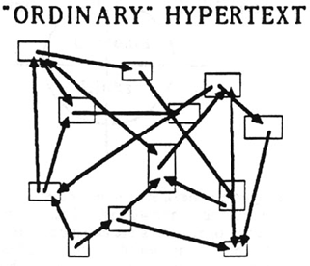
Hypertext diagram from Ted Nelson's Literary Machines
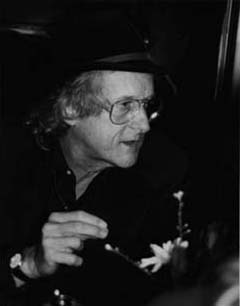
|
Ted Nelson | Hypertext <1963>
Samuel Taylor Coleridge's poem Xanadu, "a magic place
of literary memory,"
1963 : the words "hyperlink", "hypertext"
and "hypermedia"
Xanadu : a system of non-sequential writing
"the structures of ideas are not sequential."
NB. Is it such a good idea ?
As a graduate student in philosophy in the late1950s
and early 1960s, Ted Nelson had two critical intellectual encounters that
led him to become one of the most influential figures in computing. One
was with Vannevar Bush's article As We May Think, which convinced him
that emerging information technologies could extend the power of human
memory. The second was with Samuel Taylor Coleridge's poem Xanadu, "a
magic place of literary memory," in Nelson's words, that provided
him with the image of a vast storehouse of memories, and which served
as the inspiration for his life's work. From these influences, Nelson
began his quest to build creative tools that would transform the way we
read and write, and in 1963 he coined the words "hypertext"
and "hypermedia" to describe the new paradigms that these tools
would make possible.
Nelson was particularly concerned with the complex
nature of the creative impulse, and he saw the computer as the tool that
would make explicit the interdependence of ideas, drawing out connections
between literature, art, music and science, since, as he put it, everything
is "deeply intertwingled."
Nelson's critical breakthrough was to call for a
system of non-sequential writing that would allow the reader to aggregate
meaning in snippets, in the order of his or her choosing, rather than
according to a pre-established structure fixed by the author. |
Working outside of the academic and commercial establishments,
following his own strongly held convictions, Nelson devised an elaborate system
for the sharing of information across computer networks. Called Xanadu, this
system would maximize a computer's creative potential. Central to Nelson's approach
was the "hyperlink," a term he coined in 1963, inspired by Bush's
notion of the Memex's associative trails. Hyperlinks, he proposed, could connect
discrete texts in non-linear sequences. Using hyperlinks, Nelson realized, writers
could create "hypertexts," which he described as "non-sequential
writing" that let the reader make decisions about how the text could be
read in other than linear fashion. As he observed in his landmark book from
1974, Computer Lib/Dream Machines, "the structures of ideas are not sequential."
With hypertext, and its multimedia counterpart, "hypermedia," writers
and artists could create works that encouraged the user to leap from one idea
to the next in a series of provocative juxtapositions that presented alternatives
to conventional hierarchies.
Source : http://www.artmuseum.net/w2vr/timeline/Nelson.html
Slide 9 : 9/26 : NewMedia History : Bill Atkinson (6) (history6.en.html)
NewMedia History : is it that new (6) ?
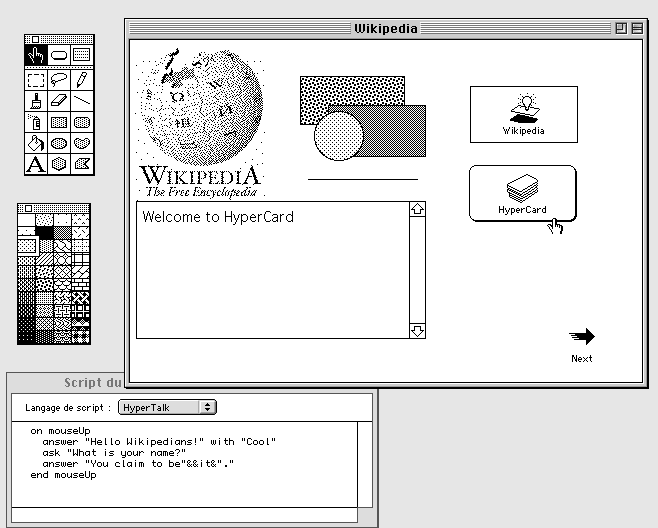
A screen shot of a HyperCard stack in development |
Bill Atkinson : HyperCard <1987>
The first accessible hypermedia system
Freely available on all Macs
A huge success (learning material, game, inventory systems etc)
Lighting system for the Petronas Towers in Kuala Lumpur, Malaysia !
Usual Apple mistake : proprietary
Hypercard = B&W Web, with Javascript, XML, XLST but no URL
HyperCard was created by Bill Atkinson and initially
released in 1987, with the understanding that Atkinson would give HyperCard
to Apple only if they promised to release it for free on all Macs (an
agreement that, according to Atkinson, ran out when the largely-rewritten
HyperCard 2.0 hit the shelves).
HyperCard is one of the first products that made
use of and popularized the hypertext concept to a large popular base of
users. Hypercard saw a loss in popularity with the growth of the World
Wide Web, since the web could handle and deliver data in much the same
way as HyperCard without being limited to files on your hard disk. Interestingly,
HyperCard had a significant impact on the web as it inspired the creation
of both HTTP itself and JavaScript. |
Because it can be used to create custom applications in
minutes, HyperCard is still used by many academic researchers and small businesses.
Some companies run HyperCard applications -- that were written years ago on
a Mac Plus -- on the latest dual-processor G4 PowerMacs.
Renault, the French auto giant, reportedly uses HyperCard for its inventory
system. The software runs part of the lighting system for the tallest buildings
in the world, the Petronas Towers in Kuala Lumpur, Malaysia.
HyperCard is used widely in schools to teach programming concepts and for creating
interactive learning materials or class reports.
Source : Wired : http://www.wired.com/news/mac/0,2125,54365,00.html
HyperCard is based on the concept of a "stack"
of virtual "cards". Each card includes fields that store data, and
the pattern for each card (its layout, as opposed to the data in the layout)
is known as the "background". Backgrounds could include pictures (its
original purpose, "background picture"), picture fields, buttons,
text, text fields (editors) and other common GUI elements, which would then
be copied onto new cards.
Users can construct databases by opening the Background editor and drawing items
onto it to hold the various pieces of data. For instance, an address book could
be easily built up by adding a few text fields to hold the name and address.
Once completed, the user simply adds a new card (by typing command-n) and types
into the fields. The background could be modified at any time, allowing changes
to be made with ease – something traditional systems are very bad at.
Basic operations such as search, add and delete were built into the HyperCard
environment, allowing simple databases to be set up and used by anyone able
to use the Apple Macintosh computer.
Scripting in the HyperTalk language allowed the system to be easily modified
and extended. Unlike most programming languages, even those that claim to be
easy to use, HyperTalk really was easy to use. Allowable syntax included all
sorts of versions of the same statement, all in readable English, to avoid forcing
the user to write their programs in a particular format.
Source : http://en.wikipedia.org/wiki/HyperCard
Slide 10 : 10/26 : NewMedia History : Tim Berners (7) (history7.en.html)
NewMedia History : is it that new (7) ?
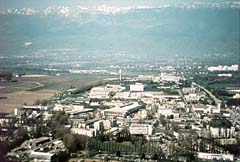
CERN laboratory, Geneva, Switzerland |
Tim Berners-Lee | World Wide Web <1989>
"An important part is the integration of a hypertext
system with existing data, so as to provide a universal system, and to
achieve
critical usefulness"
1980 : Enquire : storing, retrieval, and hyperlinking of
documents through CERN's computer network
World Wide Web : a hypertext system that would work in
conjunction with the Internet.
1991 distribution of a first Web browser and server software
Use of open format for the data and its addressing
In the early 1980s, the British engineer Tim Berners-Lee
began to develop a networked system for the electronic publishing of scientific
reports at CERN, the particle physics laboratory in Geneva, Switzerland.
This system, named Enquire, was to have enabled the storing, retrieval,
and hyperlinking of documents through CERN's computer network. It was
never completed, but – influenced by Ted Nelson's experiments with
hypertext, digital publishing, and open networking – Berners-Lee
expanded on its underlying concepts to explore how a hypertext system
might work in conjunction with the Internet.
Working under his own initiative, in the fall of
1990 Berners-Lee completed the first Web browser and server software.
In 1991, he began to distribute his software, now named the World Wide
Web, to scientists over the Internet. Berners-Lee's Web is a software
system that unites research, documents, programs, laboratories and scientists
in a fluid, open, hypermedia environment. It is inherently dynamic, capable
of expanding at an explosive rate; this was a significant departure from
the hierarchical data systems that had previously been the standard. Berners-Lee
was well aware of his system's potential to link documents across the
globe, and to transform our information culture. While his original focus
was on hypertext, from the start he saw the Web's eventual embrace of
multimedia, which could well prove to be its enduring legacy. |
In 1989 Tim Berners-Lee, a young British engineer working
at CERN, the particle physics laboratory in Geneva, Switzerland, circulated
a proposal for an in-house on-line document sharing system which he described
modestly as "a 'web' of notes with links." After getting a grudging
go-ahead from his superiors, Berners-Lee dubbed this system the World Wide Web.
The Web, as he designed it, combined the communications language of the Internet
with Nelson's hypertext and hypermedia, enabling links between files to extend
across a global network. It became possible to link every document, sound file
or graphic on the Web in an infinite variety of non-linear paths through the
network. And instead of being created by a single author, links could be written
by anyone participating in the system. Not only did the open nature of the Web
lend itself to a wide array of interactive, multimedia experiences, but by hewing
to a non-hierarchical structure and open protocols, Berners-Lee's invention
became enormously popular, and led to an explosion in the creation of multimedia.
By 1993 the Web had truly become an international phenomenon.
Source : http://www.artmuseum.net/w2vr/timeline/BernersLee.html
Slide 11 : 11/26 : NewMedia History : is it that new ? (historySummary.en.html)
NewMedia History : is it that new ?
To learn more about the past
A far more general and openminded Timeline : on the ArtMuseum.net
web site
http://www.artmuseum.net/w2vr/overture/looking.html
and http://www.artmuseum.net/w2vr/timeline/timeline.html
Great Moments In Multimedia History
http://home.earthlink.net/~atomic_rom/moments.htm
The History and development of Multimedia: a story of invenion, ingenuity
and Vision
http://www.ucalgary.ca/~edtech/688/hist.htm
So, what is NewMedia again ?
Slide 12 : 12/26 : Hypertext (hypertexte.en.html)
Hypertext
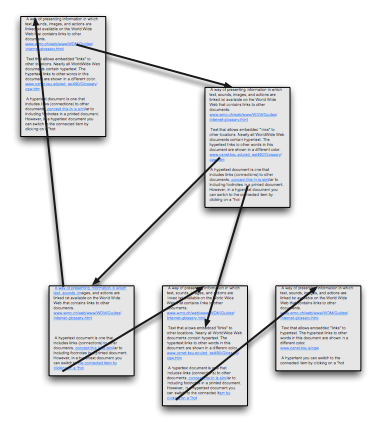 |
-
Set of text document
-
Links (or Hyperlinks)
-
Similar to Book Index
-
Ted Nelson | Hypertext <1963>
-
Non sequential organisation ?
-
The ability to click on a word in a piece of text and have the focus
immediately shifted to another page dealing with that word (Vanevaar
Bush 40s)
|
A hypertext document is one that includes links (connections)
to other documents. In concept this is similar to including footnotes in a printed
document. However, in a hypertext document you can switch to the connected item
by clicking on a "hot spot," usually indicated by a different color
from the surrounding text. In the World Wide Web links can lead to other documents
on the same data server, or might take you to other servers.
http://wings.avkids.com/SPIT/glossary.html
A collection of documents (or nodes) containing cross-references
or links which, with the aid of an interactive browser program, let the reader
move easily from one document to another.
http://webmaster.info.aol.com/glossary.html
Slide 13 : 13/26 : HyperMedia (hypermedia.en.html)
HyperMedia
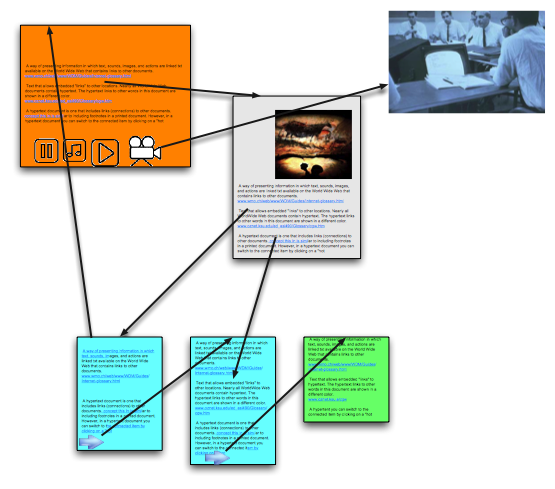 |
-
Hypertext + other media
-
Hypertext + Multimedia
(Apple Quicktime 1991 / Hypercard 1987)
-
Image, Video, Sound, 3D
-
Included or not within the text
-
CR-Rom
|
Hypermedia, a term derived from hypertext, extends the
notion of the hypertext link to include links among any set of multimedia objects,
including sound, motion video, and virtual reality.
http://www.softwareag.com/xml/about/glossary.htm
An extension of hypertext that includes graphics, sound,
video and other kinds of data.
http://webmaster.info.aol.com/glossary.html
Growing out of hypertext, this is much the same thing,
but in a multimedia environment, whereby the links may also be in the form of
pictures or even of animation or video. The Web is, increasingly, becoming a
hypermedia environment rather than merely hypertext.
http://www.highway57.co.uk/glossary.html
BTW... What is a media ? ... lots of things ! Try define: media on google
:
- Media, plural of "medium"; a means (a container or a vehicle)
of carrying or communicating information.
- http://en.wikipedia.org/wiki/Media_%28disambiguation%29
- Messages that are distributed through the technologies, principally text
in books, study guides and computer networks; sound in audio-tapes and broadcast:
pictures in video-tapes and broadcast; text, sound and/or pictures in a teleconference.
- www1.worldbank.org/disted/glossary.html
- Films, tapes and other audio-visual materials that require the use of special
listening or viewing equipment.
- www.library.cornell.edu/olinuris/ref/research/vocab.html
- materials such as VHS, DVDs, films, audiotapes and CDs, that require special
equipment to be used.
- www.library.appstate.edu/tutorial/glossary/glossary.html
- The plural form of MEDIUM.
- www.artsmia.org/art_in_america/glossary.html
- Material that information is written to and stored on. Digital photography
storage media includes CompactFlash cards and CDs.
- www.bytecamera.com/content/view/23/27/
- Forms of mass communication. Newspapers, magazines, direct mail, billboards,
bus signs, radio, television and internet are some important media that carry
advertising.
- www.motto.com/glossary.html
- Methods of communication. In computers, it refers to the material or device
used to store or transmit data.
- www.micro2000uk.co.uk/hardware_glossary.htm
- Specific environments -- air, water, soil -- which are the subject of regulatory
concern and activities.
- www.nsc.org/ehc/glossar1.htm
- Generic term for elements such as movies, sounds, and pictures.
- www.brynmawr.edu/filmstudies/writing/glossary.html
- The forms of publication. Traditional advertising media include newspapers,
magazines, billboards, radio and television. Digital interactive advertising
media started with the Internet, accessed at an indoor computer, but is quickly
spreading to television, cellular devices and outdoor locations. Up
- www.adserversolutions.com/adserver/adterms2.html
- Recordable media - blank CD-R or CD-RW discs. Mixed-Mode Disc A compact
disc including both computer data and CD-DA tracks. The data is all contained
in Track 1, and the audio in one or more following tracks. Contrast with CD
Extra. MMC A standard command set used by some CD recorders. Many newer recorders
follow this standard, though many of them also interpret it differently (so
there are still differences in how software must address these recorders,
in spite of the standard).
- www.cdmediaworld.com/hardware/cdrom/cd_cdr_glossary.shtml
- The materials to be printed, such as watercolor papers, canvas, copper,
wood veneer, cotton, plastic.
- www.wideskiesart.com/fineartglossary2.php
- The material in the trickling filter on which slime accumulates and organisms
grow. As settled wastewater trickles over the media, organisms in the slime
remove certain types of wastes thereby partially treating the wastewater.
Also the material in a rotating biological contactor (RBC) or in a gravity
or pressure filter.
- www.alken-murray.com/glossarybug2.html
- The documentation of monetary transactions (ie, sales drafts, credit slips,
computer printouts, etc.).
- www.paymentech.com/glo_glo_m_page.jsp
- The material that performs the separation of solids from liquids.
- www.advancedminerals.com/glossary.htm
- plural of medium
- www.unitedsd.net/uhs/Departments/Business/vocab.htm
- Generalised term for all types of printing material onto which images are
printed including roll, tag stock, continuous, die-cut, and fanfold.
- www.blazepoint.co.uk/faq_label_printers_glossary.html
- containing nutritive growth substances enabling cells to survive in an artificial
environment.
- www.ivf-et.com/glossary.htm
- Materials or items that are in a variety of formats other than in print,
ie. film, video, audio cassette, slides, etc. Also called Audio Visuals. Microfiche
- www.hccs.edu/system/library/TipSheets/Terms.html
- Any format for information storage that requires special listening or viewing
equipment: ie, microfilm, microfiche, videotape, CD-ROMs.
- www.library.okstate.edu/infolit/glossary.htm
- the substance in which an organism, tissue, or organ exists.
- www.sarep.ucdavis.edu/organic/complianceguide/glossary.htm
- The means by which information is distributed such as print, broadcast,
CD-ROM, World Wide Web, and so forth.
- www.rainwater.com/glossary/m.html
- Content files such as movie cIips, still images, music tracks, or sounds.
- www.channelstorm.com/Manual/Data/GL00/GL00.htm
- In the manual, media refers to members of both the print (newspapers and
magazines) and the electronic (radio and television) media.
- www.swamedia.com/swamedia/sidebar/glossary.html
Slide 14 : 14/26 : NewMedia (newMedia.en.html)
NewMedia
Hypermedia + ?
-
more interaction ?
-
more network ?
-
more databases ?
A Multimedia / NewMedia system is a system that is interactive
and uses more than one medium in an integrated
way. The media are rich media and
are stored media |
Slide 15 : 15/26 : Interactive (interactive.en.html)
Interactive
Change with time
Because of the action of the user, or irregardless
Really always as a result of an user action
The user can interact with the system and through that interaction influence
the behavior of the system
Slide 16 : 16/26 : Integration (integration.en.html)
Integration
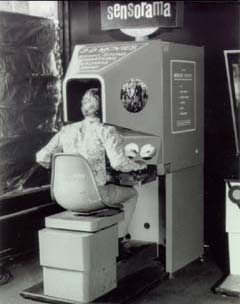 |
Mosaic ! or any of its descendants
(any web browser, or Hypercard, or the stuff produce
by shockwave)
Everything is digital
Sensorama (is not NewMedia)
N.B.: "A multimedia PC" |
Morton Heilig | Sensorama <1962>
In the 1950's it occurred to cinematographer Morton Heilig
that all the sensory splendor of life could be simulated with "reality
machines." He proposed that an artist's expressive powers would be enhanced
by a scientific understanding of the senses and perception. His premise was
simple but striking for its time: if an artist controlled the multi-sensory
stimulation of the audience, he could provide them with the illusion and sensation
of first-person experience, of actually "being there."
Inspired by short-lived curiosities such as Cinerama and 3D movies, it occurred
to Heilig that a logical extension of cinema would be to immerse the audience
in a fabricated world that engaged all the senses. He believed that by expanding
cinema to involve not only sight and sound, but also taste, touch, and smell,
the traditional fourth wall of film and theater would dissolve, transporting
the audience into a habitable, virtual world. He called this cinema of the future
"experience theater," constructing a quirky, nickelodeon-style arcade
machine in 1962 he aptly dubbed Sensorama, that catapulted viewers into multi-sensory
excursions through the streets of Brooklyn, as well as other adventures in surrogate
travel.
http://www.artmuseum.net/w2vr/timeline/Heilig.html
Slide 17 : 17/26 : Rich Media (richMedia.en.html)
Rich Media
From |
To |
This is a black & white text |
This is
a colour text
with different
fonts |
|
|
| |
|
| |
|
Slide 18 : 18/26 : Stored Media (storedMedia.en.html)
Stored Media
Available on demand
A medium holds a fixed representation of something
In New Media, this fixed representation can be stored locally or on the other
side of the planet and then played back and reviewed when required
Slide 19 : 19/26 : Interaction Design (interactionDesign.en.html)
Interaction Design
The design of those aspects of a system that the user perceives and communicates
with.
Hypothesis : in new media the system is interactive
How to make the interaction efficient ?
-
Design for unstable media
-
HCI Human Computer Interface
-
Man-machine interface
-
Information engineers
-
Usability
-
Usability and Design of the Human Computer Interface (there is a DCS course of this name)
Usability
The usability of an interface is the measure of the effectiveness, efficiency
and satisfaction with which specified users can achieve specified goals in a
particular environment with that interface
Sometimes really easy to measure : "How much time do you need to program
your VCR ?"
video cassette recorder
Slide 20 : 20/26 : Some examples (usabilityExamples.en.html)
Some examples
French vs Australian Switches
How do you turn off a windows machine ?
You click on the "Start" button !
How did you eject a disk under MacOS9 ?
You drag and drop it in the trash
Slide 21 : 21/26 : Ergonomics (ergonomics.en.html)
Ergonomics
How do we take decisions when designing ?
Physical Ergonomics, matching the body
Design of the physical aspects of a system to fit with the physical parameters
of the human body
Example height of the working space to allow both men
and women to wash the dishes
Mental ergonomics, matching the mind
Design of the interactive aspects of a system to fit with the mental parameters
of the human mind
What people expect, how they organise their work
Spiritual Ergonomics, matching the heart
Design of all aspects of a system to fit with the spiritual parameters of
the human mind
How to deal with the mood, the colour of the background
etc
The Airplane emergency procedure
The size, the way to find it, the way to not think about it
Or why children's web sites don't use black backgrounds
Culture dependant
Slide 22 : 22/26 : Some element of Design for NewMedia (design4NewMedia.en.html)
Some element of Design for NewMedia
How the Information is organized / presented (user side and internal organisation)
What buttons and functions are available to the user and when they are available
to be used
What the underlying behaviour of the system is
What information and controls are available to other users, such as the admin.
staff, super-users, supervisors, executive overview, editorial correspondant
etc
The content and layout of standard printouts available from the system
The printed material accompanying the system (e.g. : CD cover)
Slide 23 : 23/26 : Why bother (1) (whyBother.en.html)
Why bother
Because common sense is not always shared - and because it saves money
in Production
It is good to know your client to satisfy their need
(NB.! 2 clients ! )
Detailed Requirement Specification phase : you know what you have to do
Adaptation to future development
in Marketing
Quicker Adoption by the user (e.g. : Shareware)
Source of differentiation from the competitors
Slide 24 : 24/26 : Why bother (2) (whyBother2.en.html)
Why bother (2)
in Use
Less support (Courses, Help Desks, etc)
N.B. : some companies make money from support / Real cost of a system
More efficiency
Fewer errors or undo-able interaction (FIFO of Trashes)
Improved Safety (submitting mail, booking plane)
Make them return
Sticky web sites : users stay longer and return more frequently (!)
Slide 25 : 25/26 : NewMedia Design - its past (interacDesignPast.en.html)
NewMedia Design - From its past to today
50's Ergonomics : First studies : the shape of object
Industrial Design : how to use it
more and more tiny screen
Graphic design
from paper to digital : which font is best on a screen ?
Computer Human Interaction
Balloon Help
Multimedia : CDRom, educational titles, user manual
Different constraints than the web !
Pure Software Interfaces
Advanced Hardware Interfaces
Phone, Palm, iPod etc
and of course the Web !
Slide 26 : ToC : Introduction to NewMedia (tableOfContent.en.html)
Table of Contents (26 slides) for the presentation :
Introduction to NewMedia












